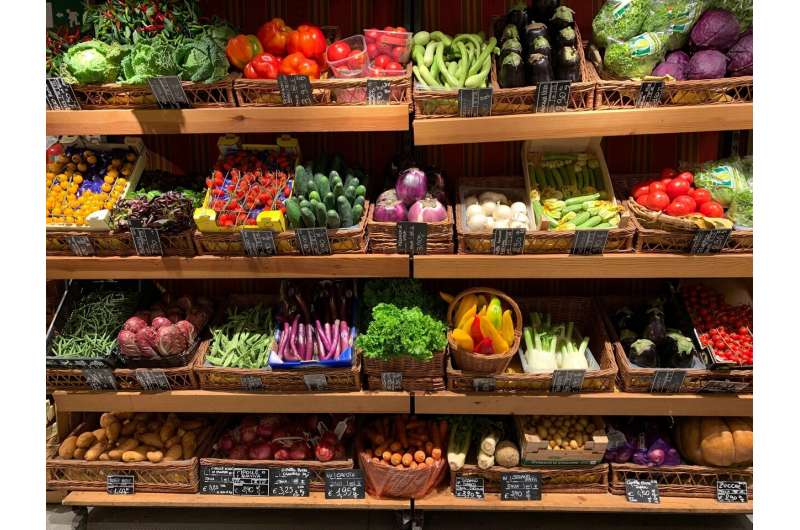How eating a whole-food, plant-based diet can prevent COVID-19

Heart disease was the No. 1 killer in the United States in 2020, with COVID-19 close behind it.
Although our efforts have been focused on reducing the spread of the virus, millions of Americans are simultaneously dealing with heart disease. And having heart disease actually increases your risk for COVID-19.
A recent study by Kim Williams Sr., MD, a cardiologist at Rush, found that a heart-healthy diet not only lowers your risk for heart disease, but also assists in fending off COVID-19.
Here, Williams shares the combined impact heart disease and the virus has had on Black and Latinx communities—and he provides helpful healthy eating tips during the era of COVID-19.
Heart disease and COVID-19
Last year, the virus killed over 400,000 Americans while cardiovascular disease typically claims someone’s life every 37 seconds, and an estimated total of 655,000 Americans.
Additionally, people with heart disease are at a higher risk of contracting a severe case of COVID-19. And if you’re living with other underlying conditions, like diabetes, high blood pressure or obesity, both diseases can have a significant impact on your overall health.
“It’s particularly tough because both heart disease and COVID-19 have the same risk factors for having a bad outcome—it’s a perfect storm,” Williams says.
Here is a list of risk factors that contribute to worse outcomes for heart disease and the virus:
- Diabetes
- High blood pressure
- High cholesterol
- Obesity
Williams emphasizes that nutrition can help manage and improve, if not reverse, all of these risk factors. “If you want to avoid a bad outcome from cardiovascular causes, or even COVID-19, this is the time to change your diet.”
Importance of healthy eating
Williams’ research shows that a whole-food, plant-based diet is associated with a lower risk of cardiovascular disease and, ultimately would contribute to a lower risk of COVID-19.
“Your level of heart inflammation goes down when you eat a whole-food, plant-based diet, and it helps to build your immune system,” he says. “So, as I like to say it, #GoVegan4COVID.”There are over 20,000 types of vegetables, fruits, grains and beans on this planet, but Williams notes that if you’re still not sure what to eat, focus your grocery shopping on the produce section.
“If it’s a plant, go ahead and eat it, but be careful if it is made in a factory,” he says. “There is such a thing as an unhealthy vegan diet. For example, eating refined grains, fried potatoes and sugar-sweetened beverages may indeed be vegan, but they are actually worse than eating an animal product.”
The pandemic has also contributed to other challenges associated with food—including overall access, as well as financial and safety concerns. Williams suggests taking advantage of grocery stores that provide an online delivery service and that sell plants and grains in bulk.
“The availability of healthy foods has actually improved substantially, particularly in regard to the concept of food deserts and the delivery system,” he says. “As for the price tag, I’ve heard numerous times that eating a whole-food, plant-based diet is more expensive. In reality, it’s less expensive than consistently purchasing processed or fast food.”
Williams recommends visiting the Association of Black Cardiologists website to find healthy recipes and concepts that can help you change to a whole-food, plant-based diet.
Priority communities
Cardiovascular disease and COVID-19 disproportionately affect Black and Latinx communities.
In fact, the Centers for Disease Control reports that Black Americans are 20% more likely to die from heart disease. Heart disease is also one of the leading causes of deaths in the Latinx community. Additionally, Black Americans are almost four times more likely to be hospitalized due to COVID-19, whereas Latinx folks are more than twice as likely to be hospitalized.
These three factors contribute to these disparities:
- Diet. Food choices remain a key factor to your overall risk. For example, foods that contain an excessive amount of refined carbohydrates, among other ingredients, can increase the risk of heart disease, such as obesity and diabetes, if consumed on a consistent basis. This lowers your immune system and worsens your risk for COVID-19.
- Structural racism. Structural racism impacts education and work situations that contribute to food choices and risk for the virus. “If you have a group of people who are systematically (inadequately) educated, or who are not receiving college degrees with a higher frequency, this group of people is probably working at public-facing jobs more than other people,” Williams says. “That being said, they are more at risk of being exposed and don’t always have a lot of options, as they are considered essential workers during the pandemic.”
- Home situation. During the pandemic, it can be difficult if your home situation does not allow space for six people to stay 6 feet apart all the time. If one family member catches the virus, it can affect the whole household. Williams notes that the real tragedy is that older adults—the people with the highest number of risk factors and underlying conditions—suffer the most.
“It’s a very difficult time for all people of color,” Williams says. “There’s been an unexpected emphasis put on how much our society needs to address our social disparities and truly try to resolve the educational and economic disparities. If we can all commit to this, we are less likely to have the same problem in the future.”
Protecting ourselves and our communities
COVID-19 has taken a toll on our lives, and as a result, we’ve put other health concerns on hold. Although the virus has created a global pandemic, we must not forget about the ongoing leading cause of death in the United States—heart disease.
Source: Read Full Article
